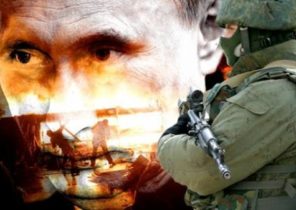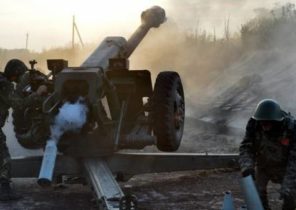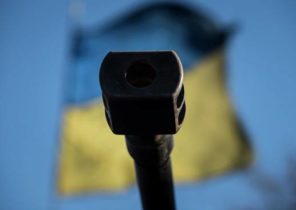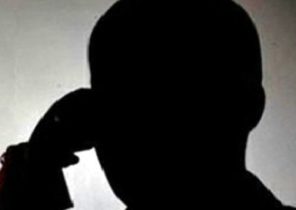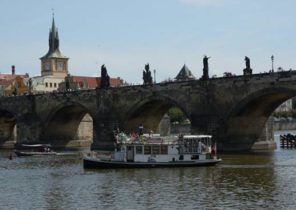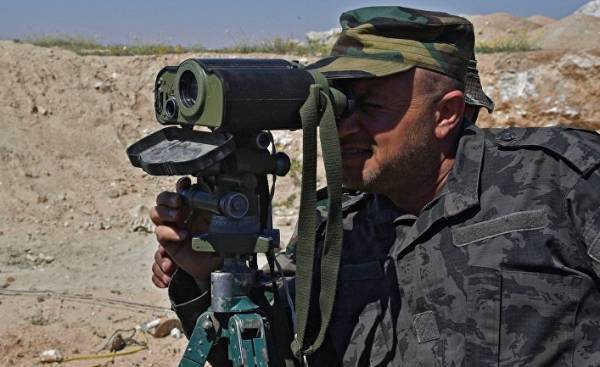
The Syrian authorities engage in the last battle for the realization of the project of the so-called “useful Syria”. An important role in the framework of this plan is the city of Dara’a, the importance of which has been repeatedly emphasized by the President of the country, in particular, in a speech delivered in July 2015. Just then came the words that “the homeland belongs to those who defend, not those who live on these lands and has the nationality of that state”. In this context, they referred to areas that have the greatest significance and need special protection, and areas, the loss of which would have serious consequences. Such statements caused a wide resonance in the media and resulted in a fierce struggle for supremacy in publishing these news. Meanwhile, the Syrian regime and Iran were aimed at the implementation of the plan “useful Syria” in two main areas.
First and foremost is the demographic trajectory, involving the migration to these areas loyal groups of citizens. The project started with the Western part of Damascus and HOMS, following in the direction of Aleppo. The second part of the plan, “geographic”, was to establish control over the territories occupied by the opposition, with the support of the Russian air force and Iran owning squads Hizbullah, “the brigade Patition”, “Sanbian and Asaib AHL al-Haqq”.
It is obvious that the armed opposition was unable to offer resistance owing to capacity constraints. Anyway, the actions of the warring opposition groups played into the hands of Syrian authorities. In addition, the opposition has lost the confidence of the population for a number of reasons. One of them is closer to the terrorist “al-Nusra Dzhebhat” (banned in Russia — approx. ed.), the conclusion of agreements that do not meet the interests of the population and participation in the negotiations in Astana, which left open the question of the continuation of hostilities in the country under the pretext of the imposition of the cease-fire regime and reduce the degree of tension in the conflict zone.
Thus, the battle for Daraa is crucial for all stakeholders. The Syrian regime, and with it Iran, which is one of the guarantors of the truce, continue to clear the way towards the borders with Jordan, using violence and destroying everything. Dara’a is seen as a strategic point, which will connect the disparate forces and would give Iran the ability to remain in the conflict region in the immediate vicinity of the borders with Israel and falling within the scope of US interests.
If we compare this fact with the existence of the secret organizations and the suspicious silence surrounding the events occurring in the Western desert, the question arises about the true causes of the U.S. desire to limit the role of Iran in resolving the conflict. But the real causes lie in the fact that, despite the presence of the Americans, Iran could advance to the borders of Iraq, paving the way of At-Tanaf and desert, and concentrate its forces on the borders of Jordan and Israel.
Another pole in the balance of power are the people of the region Horan, desperate to defend the “cradle of revolution”. They recognize the consequences that may occur in the case of Daraa, and continue to fight, despite the lack of support from the outside.
Have an interest and groupings involved in the negotiations in Astana, one way or another involved in the formation of borders “Useful Syria” and do not want to lose their positions. It is obvious that governmental forces will continue military operations until, until clear the way from Jordan to Damascus. This means that the regime will try to establish its authority over the territories to the East of this corridor and to link them with areas that are already under their control in es-Sweida.
In addition, the Syrian authorities are trying to expand their control in the Western direction, at least three kilometers to protect the approaches to the district from the city of Nauvoo and occupied the Golan heights in the West to the provinces of Damascus and Quneitra in the North, whereas the status of these areas as part of a plan developed at the talks in Astana was never defined.
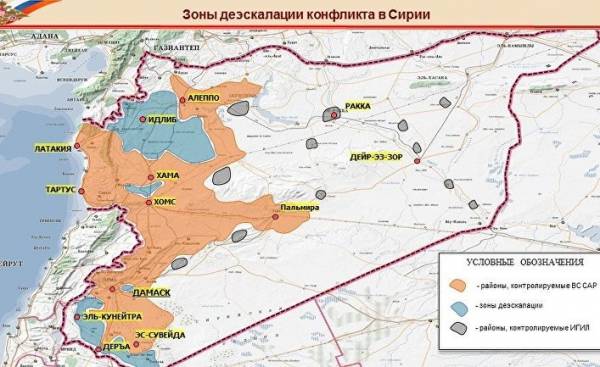 © Ministry of defence Rfsuny de-escalation in Syria
© Ministry of defence Rfsuny de-escalation in Syria
At the same time, today the main question boils down to who gets control of areas from Al-Tanaf to the territories located to the South-East of es-Sweida.
In General, it can be noted that the boundaries of “useful Syria” has moved to the South after it turned out that the project, including the Northern direction, difficult. And the hopes of those who participated in the partition of Syria as part of the negotiations in Astana are becoming more elusive to the extent that, with the permission of America and the acquiescence of the international community in the conflict involved all new and new forces. The Syrians are in complete confusion about the fate of Syria, which will not be the same as before.
